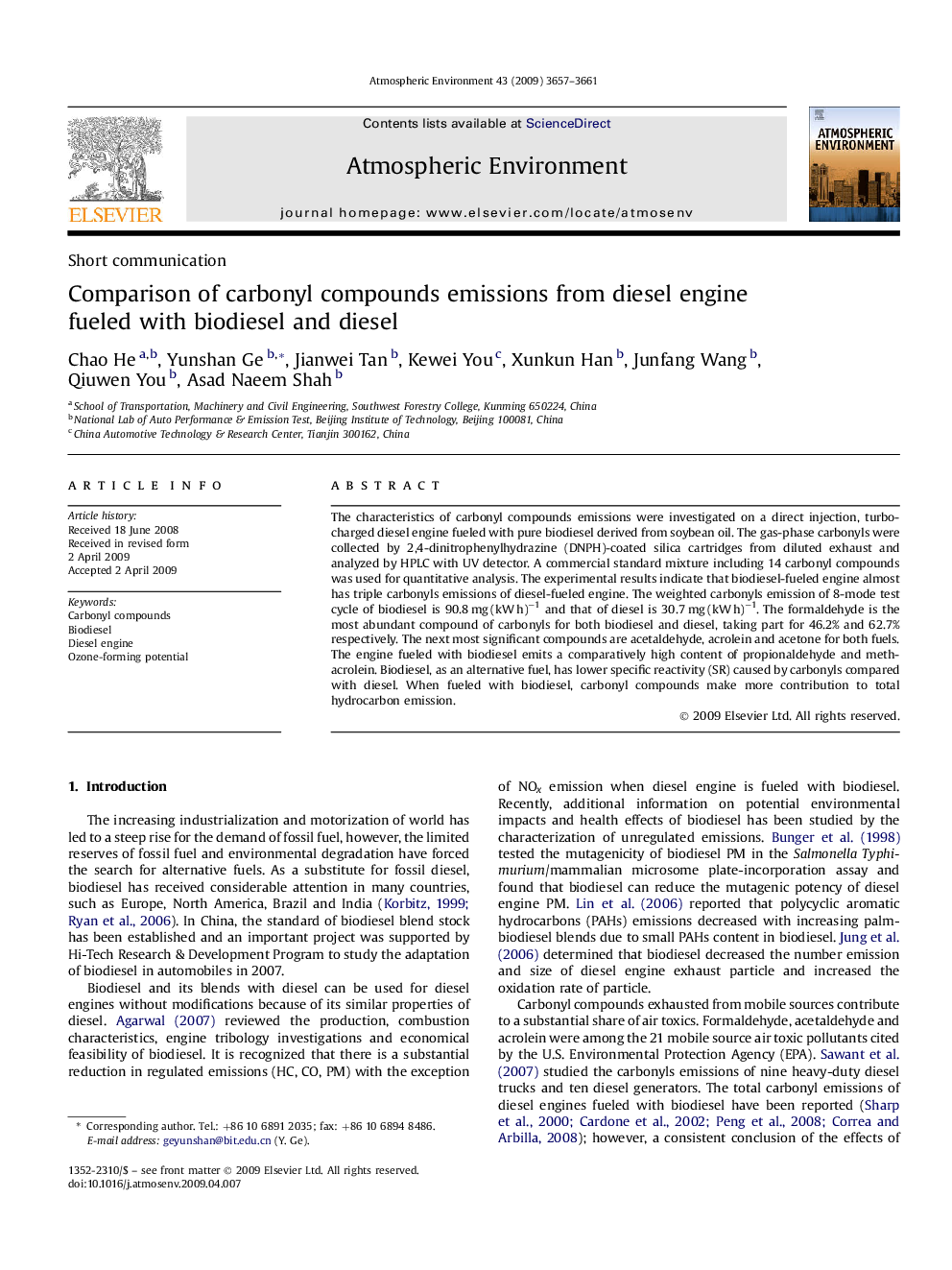| Article ID | Journal | Published Year | Pages | File Type |
|---|---|---|---|---|
| 4441676 | Atmospheric Environment | 2009 | 5 Pages |
The characteristics of carbonyl compounds emissions were investigated on a direct injection, turbocharged diesel engine fueled with pure biodiesel derived from soybean oil. The gas-phase carbonyls were collected by 2,4-dinitrophenylhydrazine (DNPH)-coated silica cartridges from diluted exhaust and analyzed by HPLC with UV detector. A commercial standard mixture including 14 carbonyl compounds was used for quantitative analysis. The experimental results indicate that biodiesel-fueled engine almost has triple carbonyls emissions of diesel-fueled engine. The weighted carbonyls emission of 8-mode test cycle of biodiesel is 90.8 mg (kW h)−1 and that of diesel is 30.7 mg (kW h)−1. The formaldehyde is the most abundant compound of carbonyls for both biodiesel and diesel, taking part for 46.2% and 62.7% respectively. The next most significant compounds are acetaldehyde, acrolein and acetone for both fuels. The engine fueled with biodiesel emits a comparatively high content of propionaldehyde and methacrolein. Biodiesel, as an alternative fuel, has lower specific reactivity (SR) caused by carbonyls compared with diesel. When fueled with biodiesel, carbonyl compounds make more contribution to total hydrocarbon emission.
